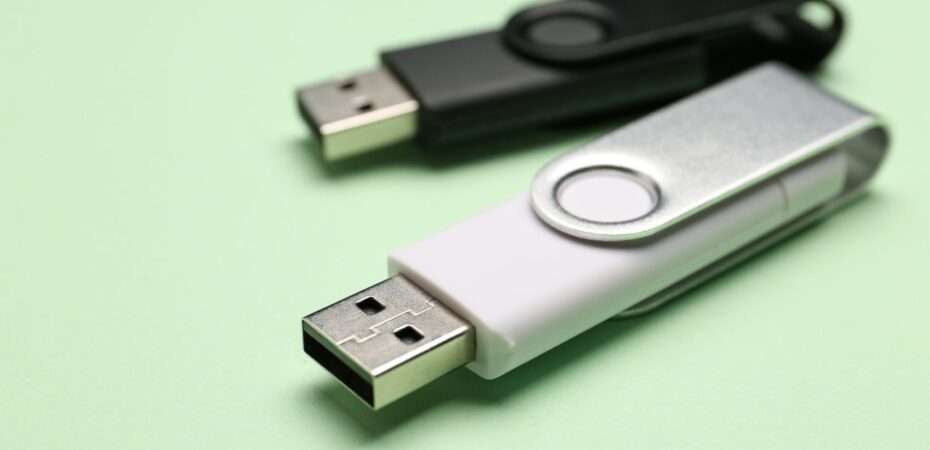When it comes to portable storage devices, it is common to feel perplexed by the different terminologies. There may be instances where you hear individuals discussing flash drives and USB sticks, leaving you unsure if they are referring to the same item or if there is a distinction between the two. Consequently, it is essential to understand the dissimilarity between a flash drive and a USB stick.
In reality, there is no distinction between a flash drive and a USB stick. They are essentially two names used interchangeably for the same portable storage device that connects to a computer through a USB port.
Although this answer may appear easy to comprehend, it’s important to keep reading as there are several other associated terms and concepts that can create confusion when talking about portable storage devices. Recognizing these differences can assist you in making well-informed choices regarding your storage requirements and prevent misunderstandings while discussing technology with others.
What Are Some Other Names For USB Sticks?
Although we have confirmed that flash drives and USB sticks are synonymous, you may come across different terms used to describe these devices. A few commonly used alternative names are:
The name “thumb drive” is derived from its diminutive size, which is often similar to that of a human thumb.
2. Jump drive: This term might have originated from its capability to rapidly transfer data from one device to another.
The pen drive derives its name from its elongated shape, which closely resembles that of a pen.
Memory stick: Indicating its purpose as a convenient means of storing data on the go.
Knowing these different terms can make it easier for you to understand and communicate about portable storage devices that utilize flash memory and connect to a computer through a USB port. This knowledge will also prevent any confusion while shopping for or discussing such devices.
How Do USB Sticks Compare To Other Portable Storage Options?
In addition to USB sticks being popular, there exist various alternative portable storage options. Let us now compare them.
External hard drives provide significantly greater storage capacities, typically measured in terabytes. However, they are larger in size and less convenient to carry around compared to USB sticks. These hard drives are ideal for backing up substantial amounts of data or storing extensive collections of media files.
SD cards are often utilized in cameras and smartphones and are smaller in size compared to USB sticks. However, they necessitate a compatible slot or adapter for connecting to most computers. These cards are perfect for augmenting storage capacity in mobile devices.
Cloud storage services such as Dropbox or Google Drive provide the convenience of virtual storage accessible from any internet-connected device. Despite not being physical, cloud storage offers the benefits of portability and effortless sharing capabilities.
The strengths of each option vary, and the optimal choice relies on your particular requirements. USB sticks offer a blend of portability, user-friendliness, and decent storage capacity, making them a flexible option suitable for numerous users.
What Should I Consider When Choosing A USB Stick?
There are various factors that can impact your decision when choosing a USB stick.
- Consider the amount of data you frequently store and transfer when choosing a USB stick, as they are available in a range of sizes, starting from 8GB and going up to 1TB or beyond.
- USB 3.0 and subsequent versions provide quicker data transfer rates compared to USB 2.0. Having a faster USB version can be time-saving, especially for individuals who frequently transfer large files.
- Durability is an essential aspect when considering USB sticks. Certain models are specifically engineered to withstand rough conditions, ensuring water and shock resistance. This becomes particularly advantageous if you anticipate carrying your drive in demanding environments.
- Having security features is essential when storing sensitive information on USB sticks. Some of these features include hardware encryption and fingerprint recognition, which provide additional data protection.
- Ensure quality and minimize the risk of data loss caused by device failure by opting for brands with a proven track record of reliability.
- Quantity Needs: If you want to purchase multiple units, consider buying bulk flash drives. This can be more cost-effective for businesses, educational institutions, or large-scale events where you need to distribute information to many people.

When taking these factors into account, you can select a USB stick that suits your requirements, regardless of whether you’re a student, professional, or casual user. Keep in mind that the ideal choice will strike a balance between your storage needs, budget, and specific usage scenarios.
How Can I Protect The Data On My USB Stick?
Ensuring data security is of utmost importance, particularly when it comes to portable storage devices that can be prone to loss or theft. To safeguard the data on your USB stick, consider implementing the following protective measures:
Consider utilizing third-party encryption tools like VeraCrypt or BitLocker if your USB stick does not have built-in encryption software.
2. Password Security: Create a robust password for your USB drive, steering clear of easily predictable details such as birthdays or names.
Make sure to regularly back up the contents of your USB stick to a secure location, instead of solely relying on it for important data.
4. Ensure Physical Protection: Safeguard your USB stick against physical harm by employing a durable keychain or protective case.
Always make sure to use the “Safely Remove Hardware” option before removing your USB stick to avoid any potential data corruption.
Make sure to frequently scan your USB stick using antivirus software in order to safeguard against the transmission of malware.
By implementing these measures, you can effectively mitigate the risk of data loss or theft, safeguarding your valuable information from unauthorized access, even if your USB stick is acquired by unauthorized individuals.
What Are Some Creative Uses For USB Sticks Beyond Data Storage?
USB sticks are commonly employed for storing and transferring data; however, their adaptability opens up intriguing possibilities for alternative uses. Discover a few imaginative ways to utilize your USB stick:
1. Portable Apps: With portable apps, you have the convenience of installing and running programs directly from your USB stick, enabling you to create a portable workspace that can be accessed on any computer.
2. Create a bootable drive using your USB stick for troubleshooting purposes or to experiment with new operating system versions.
3. Digital Portfolio: Artists and designers have the convenience of using a USB stick to transport and exhibit their work to prospective clients or employers.
In case of emergencies, it is advisable to keep crucial documents, contact details, and medical records securely stored on an encrypted USB drive as part of an emergency kit.
Some car stereos have the capability to directly play music from a USB stick, transforming it into a portable music library.
TV Enhancer: Transform your USB stick into a mini media center by utilizing the USB ports found in numerous smart TVs, allowing you to play media files.
7. Enhance Security with Password Manager: Safeguard your encrypted passwords by storing them on a USB stick, adding an additional layer of protection.
8. Emergency Internet Solution: Certain USB sticks have the capability to function as portable hotspots, ensuring internet connectivity in urgent situations.

By exploring innovative applications, you can discover the boundless potential of USB sticks that goes beyond mere data storage. Embracing a creative mindset allows you to unlock the full range of capabilities offered by these compact yet mighty devices, enhancing their usefulness in your everyday activities.
Taking Your USB Knowledge to the Next Level
After gaining a thorough understanding of the intricacies and functionalities of USB sticks, it is important to put this knowledge into practice. Take a moment to assess how you currently utilize USB sticks and contemplate incorporating one of the innovative applications or security measures mentioned in this article. Whether it involves encrypting valuable information or repurposing an old USB stick as a convenient app launcher, implementing these suggestions can greatly enhance your digital experience and boost productivity.
Related Posts:
What Is The Difference Between A Flash Drive And A USB Stick?



